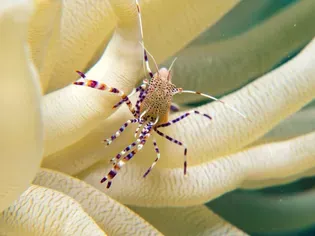Acclimating Saltwater Aquarium Fish With the Drip Line Method
Updated on 04/26/24

Master the Drip Line Method for Seamless Saltwater Aquarium Fish Acclimation
Welcome to the realm of saltwater aquariums, where vibrant marine life awaits your care. Introducing new fish to your underwater paradise requires meticulous techniques to ensure their well-being and adaptation. Among the most effective methods is the drip line method, a gentle and gradual process that mimics the natural transition of fish from one environment to another.
Why Use the Drip Line Method?
* Reduces Stress: Gradually exposing fish to the new water parameters minimizes the shock and stress associated with abrupt changes.
* Prevents Osmotic Shock: The drip method allows the fish's body to adjust to the difference in salinity and pH levels, minimizing the risk of osmotic shock.
* Prevents Disease: Stress and osmotic shock can weaken the fish's immune system, making them more susceptible to disease. The drip line method helps ensure a healthy transition.
Step-by-Step Guide to the Drip Line Method
1. Prepare the Quarantine Tank: Set up a separate quarantine tank with water from your main display tank. Adjust the temperature and salinity to match the source tank.
2. Float the Bag: Place the bag containing the new fish in the quarantine tank and let it float for about 30 minutes. This allows the water in the bag to slowly acclimate to the tank temperature.
3. Attach the Drip Line: Connect one end of the drip line to the source water container and the other end to the quarantine tank. Adjust the drip rate to about 2-3 drops per second.
4. Monitor the Fish: Observe the fish closely as the drip continues. Look for signs of stress, such as darting, gasping, or rubbing against the tank walls.
5. Adjust the Drip Rate: If the fish shows signs of stress, slow down the drip rate. If the fish is adapting well, you can gradually increase the drip rate until the water level in the quarantine tank matches the source tank.
6. Acclimation Time: The acclimation process can take several hours to a few days, depending on the species of fish and the difference in water parameters. Monitor the fish closely throughout the process.
Examples of Drip Line Acclimation
* Damselfish: Can acclimate well in about 2-3 hours using a drip rate of 2-3 drops per second.
* Clownfish: Requires a longer acclimation time of 4-6 hours with a drip rate of 1-2 drops per second.
* Mandarin Dragonet: A delicate species that needs a very slow drip rate of 1 drop per 10 seconds and an acclimation time of up to 24 hours.
Tips for Successful Acclimation
* Use high-quality water from a reputable source.
* Ensure the drip line is clean and free of any chemicals.
* Monitor the pH and salinity of the water regularly.
* Provide plenty of hiding places for the new fish in the quarantine tank.
* Avoid overfeeding during the acclimation process.
* Observe the fish closely for any signs of disease or stress.
Conclusion
The drip line method is an essential technique for saltwater aquarium enthusiasts seeking to safely introduce new fish to their underwater ecosystem. By replicating the natural transition process and allowing the fish to adapt gradually, this method minimizes stress, prevents osmotic shock, and promotes long-term health. Embrace the drip line method and welcome your new aquatic companions into their captivating underwater abode with confidence.
Explore More Pets

Freshwater Aquarium Filters
How to Deal With Cloudy Aquarium Water

Saltwater Aquarium Filters
How Do You Remove Chloramines From Tap Water?

Freshwater Aquariums & Habitat
Can I Keep My Koi Fish Inside?

Saltwater Aquariums & Habitat
14 Best Floating Plants for Your Aquarium

Freshwater Fish Health
How to Treat Ich on Freshwater Fish

Saltwater Fish Health
Fin Rot in Aquarium Fish

Freshwater Aquarium Filters
How to Do Aquarium Water Changes

Saltwater Fish Health
How Do Fish Get Parasites?